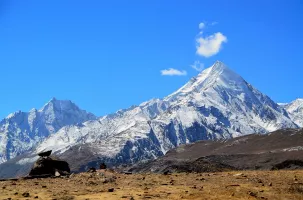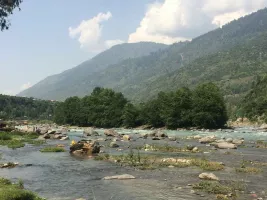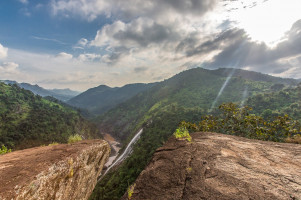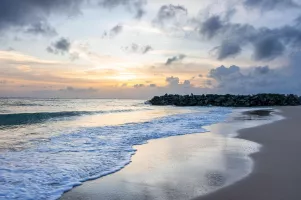Thangu Valley
Duration
2 to 3 Days
2 to 3 Days
Best time to visit
Apr-Jun, Sep
Apr-Jun, Sep
Theme
Hill Station, Adventure
Hill Station, Adventure
Thangu Valley Travel Guide
Thangu Valley, located in the North Sikkim district of India, is a picturesque destination known for its breathtaking landscapes and tranquil ambiance. Situated at an elevation of 13,500 feet above sea level, this valley is surrounded by snow-capped mountains, lush meadows, and pristine lakes. Thangu Valley holds great historical significance as it was once a major trade route between Tibet and India. The region is also renowned for its rich cultural heritage, with a mix of Tibetan and Sikkimese influences evident in the local traditions and architecture.Top Attractions in Thangu Valley
- Chopta Valley
- Gurudongmar Lake
- Yumthang Valley
- Lachen Monastery
- Thangu Lake
Thangu Valley is Famous for
Its mesmerizing landscapes and high-altitude beauty make Thangu Valley a popular destination for nature lovers and adventure enthusiasts.Top Attractions in Thangu Valley
- Chopta Valley - Known for its vibrant rhododendron blooms
- Gurudongmar Lake - One of the highest lakes in the world
- Yumthang Valley - Famous for its hot springs and colorful flowers
- Lachen Monastery - A serene Buddhist monastery with stunning views
- Thangu Lake - A pristine alpine lake surrounded by snow-capped peaks
What's Great about Travelling to Thangu Valley?
- Perfect destination for nature lovers
- Offers a peaceful retreat away from the hustle and bustle
- Great for adventure activities like trekking and birdwatching
What's Not So Great about Travelling to Thangu Valley?
- High altitude may not be suitable for individuals with health issues
- Limited accommodation options in the remote valley
- Rough terrain and unpredictable weather conditions
Travel Tips for Thangu Valley
- Acclimatize properly to avoid altitude sickness
- Carry warm clothing and sturdy footwear
- Respect the local customs and traditions
Important Thangu Valley trip information
- Ideal Duration: 3-4 days
- Best Time to Visit: April to June for pleasant weather
- Nearby Airports and Railway Stations: The nearest airport is Bagdogra Airport and the closest railway station is New Jalpaiguri Railway Station.
FAQ's on Thangu Valley
Q1: What is the best time to visit Thangu Valley?
The best time to visit Thangu Valley is during the summer months from May to July when the weather is pleasant and the valley is in full bloom. Winter months from November to February offer a unique experience with snow-covered landscapes for those interested in winter sports. Monsoon season from July to September should be avoided due to heavy rainfall. Special events like the Yak Race Festival in August are also worth considering for a visit.
Q2: Do I need a visa to travel to Thangu Valley?
Travelers to Thangu Valley require a Restricted Area Permit (RAP) for entry, which can be obtained through a registered tour operator in India. Exceptions apply for Indian nationals and residents of Bhutan who can visit without a permit. It is advisable to check the latest visa requirements before planning your trip.
Q3: What are the must-visit attractions in Thangu Valley?
Thangu Valley offers breathtaking natural beauty with attractions like the Gurudongmar Lake, Chopta Valley, and Lachen Monastery. Adventure enthusiasts can explore the Kanchenjunga National Park or go trekking to Green Lake. Don't miss the opportunity to interact with the local Lepcha community and experience their culture.
Q4: Is Thangu Valley a safe place to travel?
Thangu Valley is considered safe for tourists. However, travelers should be cautious while trekking or engaging in adventurous activities. It is recommended to travel with a registered guide, especially in remote areas. Avoid venturing out alone at night and be mindful of your belongings in crowded places.
Q5: What is the local currency in Thangu Valley and can I use credit cards?
The local currency in Thangu Valley is the Indian Rupee (INR). While credit cards are accepted in some hotels and larger establishments, it is advisable to carry cash for smaller purchases and in remote areas. ATMs are limited, so it's best to withdraw sufficient cash in major towns before heading to rural areas.
Q6: What is the local cuisine like in Thangu Valley?
The local cuisine in Thangu Valley is influenced by Tibetan and Sikkimese flavors, with dishes like Thukpa (noodle soup), Momos (dumplings), and Chhang (local millet beer). Vegetarians will find plenty of options like Sael Roti and Kinema. Be prepared for spicy food and try the local butter tea for an authentic taste of the region.
Q7: What transportation options are available in Thangu Valley?
Transportation in Thangu Valley mainly consists of shared jeeps, taxis, and private cars. Public buses are limited, so hiring a vehicle or arranging for a tour is the best way to explore the valley. Trekking and hiking are popular ways to get around, especially to reach remote villages and scenic spots.
Q8: Are there any cultural norms or etiquette I should be aware of when visiting Thangu Valley?
When visiting Thangu Valley, it is important to respect the local customs and traditions. Dress modestly, especially when visiting religious sites or interacting with the local community. Seek permission before taking photographs of people or their homes. Remove your shoes before entering a monastery or someone's house as a sign of respect.
Q9: I am a travel agent. How can I buy travel leads of Thangu Valley?
Register yourself as a travel agent at agents.tripclap.com and then you can buy travel leads to Thangu Valley once your account is approved. For more details contact our support team at +91-8069186564 or support@tripclap.com





